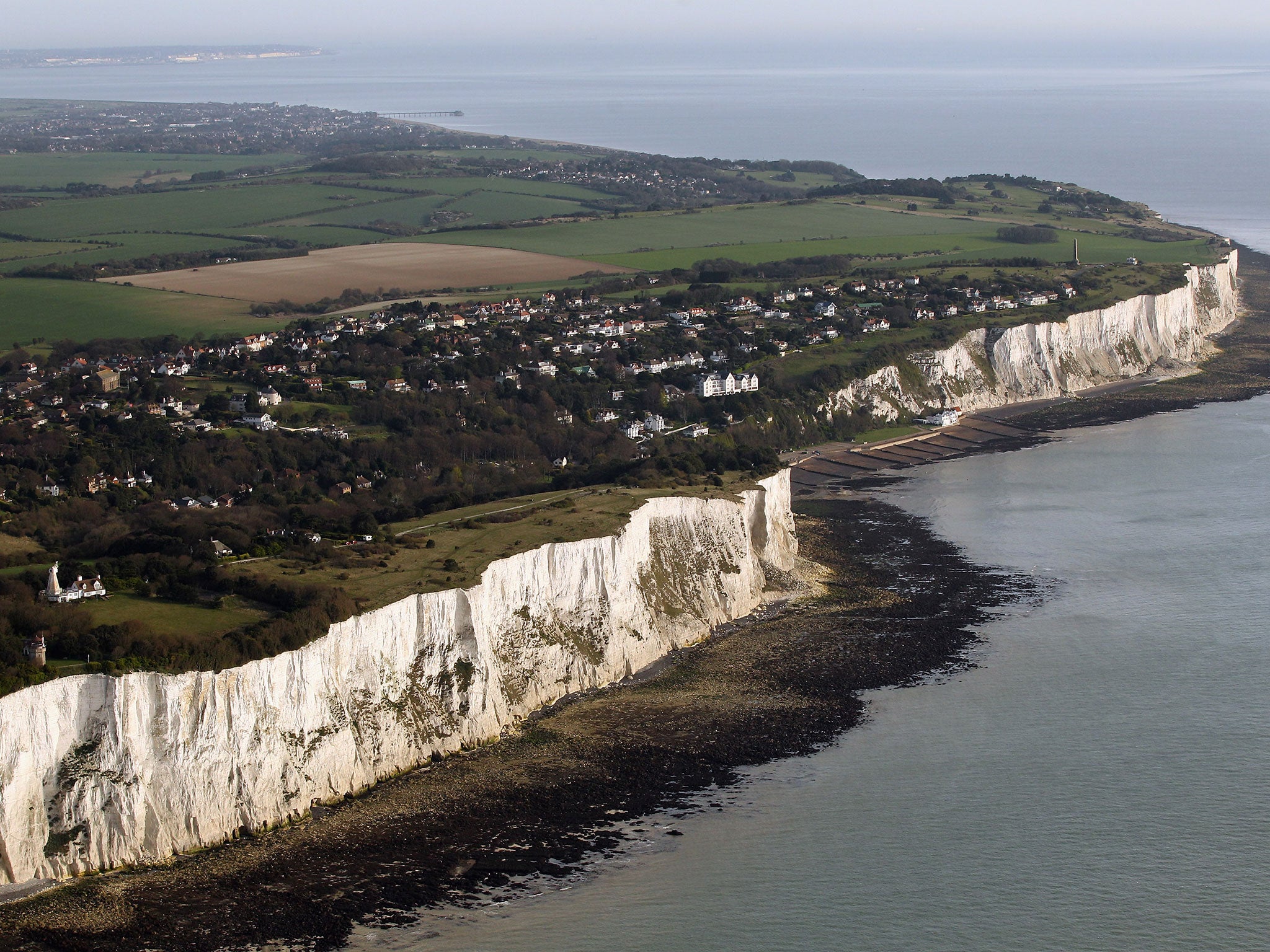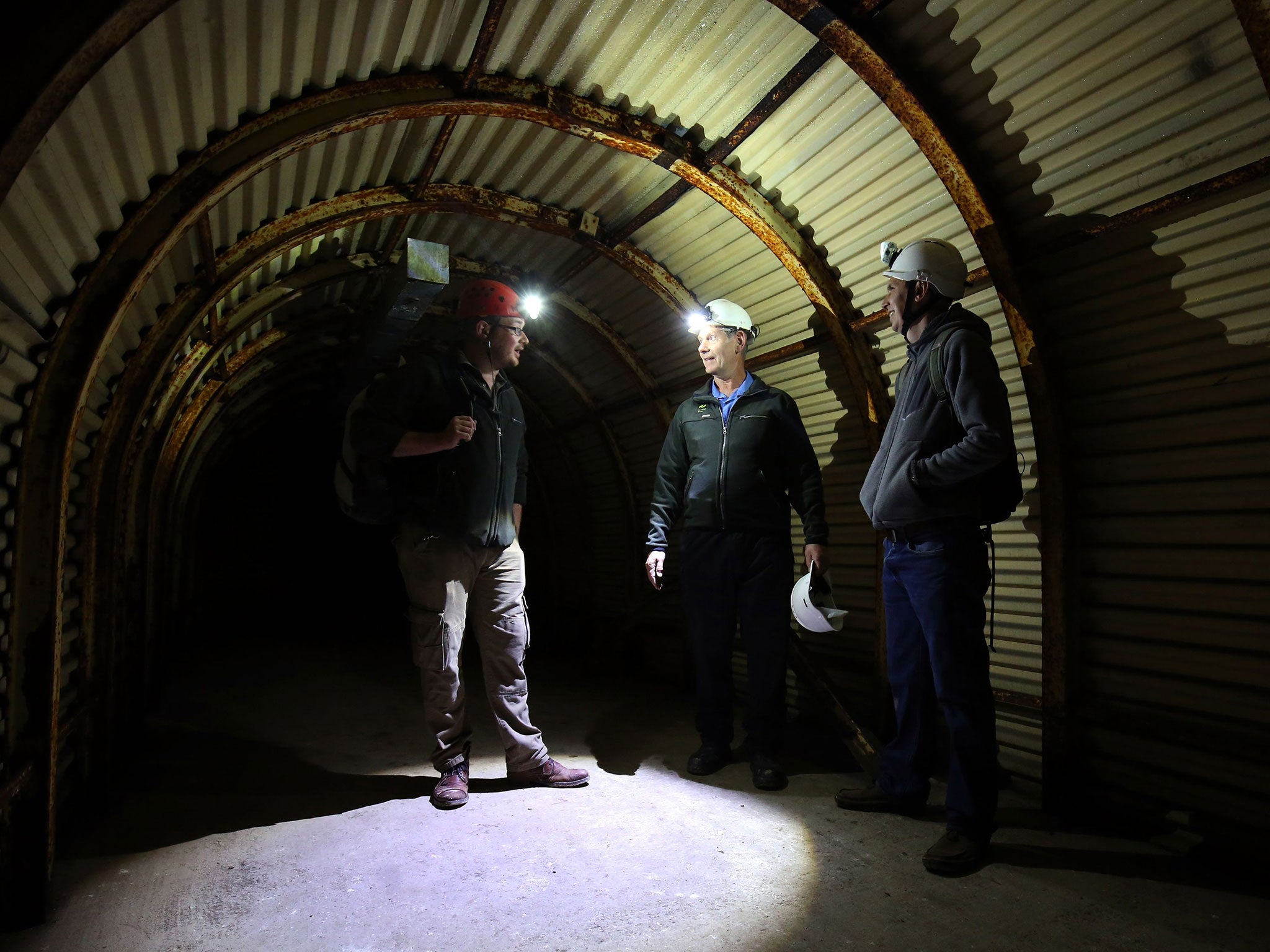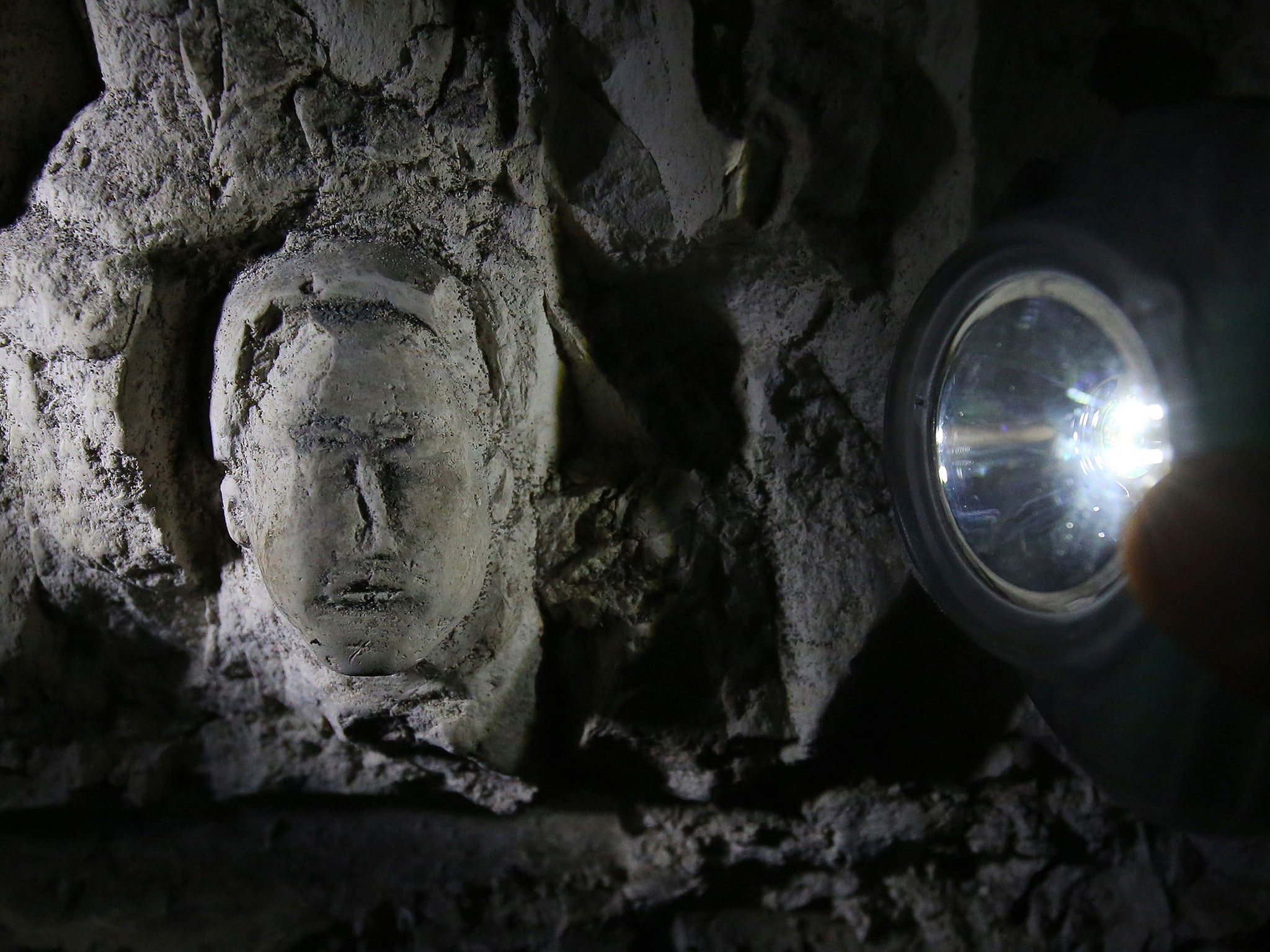Forgotten World War Two tunnels under White Cliffs of Dover to reopen
Churchill ordered shelter as part of Britain’s defence against the Nazis in 1941

For 100 days in 1941, the men of the 172nd Tunnelling Company toiled beneath the White Cliffs of Dover to create a labyrinth of tunnels to protect the artillerymen tasked with guarding Britain’s coastline from a Nazi onslaught.
The result of their labours – some 3,500 square feet of bomb-proof accommodation including a hospital – was visited approvingly by Winston Churchill. But after the Second World War it fell into disuse and its entrance was eventually blocked off with 30 tonnes of rubble.
Now, some 74 years after its creation, the Fan Bay Deep Shelter will once more have a human presence after a team of National Trust volunteers and experts re-excavated the site and uncovered the remarkable story of a hole in the ground that once formed a key part of the nation’s front line.
The complex reopens today after a two-year conservation project which provides a fresh insight into how the troops assigned to man the gun battery on the cliffs above conducted the war, as Nazi forces massed just 21 miles away across the English Channel in occupied France.

Lying some 75ft below Dover’s redoubtable chalk cliffs, the shelter was built in 1941 by the Royal Engineers after a furious Churchill discovered that German shipping was passing through the Strait of Dover unhindered.
The resulting subterranean complex eventually formed part of a chain of gun batteries along the English coast which ultimately closed the Channel to enemy vessels and helped deter a Nazi invasion.
But the impregnable facility also casts light on the life led by defenders of the realm with large quantities of wartime graffiti found on the walls, along with drawings and artefacts including ammunition.
The graffiti provides an insight into the mindset of many soldiers in 1941 as the country drew breath from the traumas of Dunkirk and the Battle of Britain but found itself unable to intervene on the European mainland as Hitler focused his onslaught on the Soviet Union. One inscription on the shelter wall reads “Russia bleeds while Britain Blancos” – a reference to the white compound that was used by troops for the mind-numbing task of preparing their equipment for inspection.
Elsewhere, a figure is carved into the soft chalk showing a stick man running into the shelter with an artillery shell above his head. The battery came under fire from German guns on the opposite side of the Channel on several occasions during the war.
Jon Barker, who manages the site for the National Trust, said: “There’s been no public access to the tunnels for over 40 years and so they remain much as they were when they were abandoned. The White Cliffs are forever linked to our country’s defences and the tunnels, with their graffiti-covered walls, are an emotive time capsule from this period.”

The trust acquired the site in 2012 following a £1.2m fund-raising appeal and it took a team of 50 volunteers, aided by archaeologists and mining experts, some two years of work to clear the rubble used to block the steep entrance stairs in the 1970s and shore up the remaining structure, which had been partially destroyed by metal salvors.
The rediscovered complex consists of five large chambers built to house four officers and 118 men, connected by tunnels lined with metal sheeting and iron girders borrowed from the coal industry.
The artefacts found in the spaces where the men of the Royal Engineers and then the Royal Artillery worked include a football pools coupon dated 20 February 1943 on which the predicted results of 14 games was recorded, and a needle and khaki thread found stuck into the tunnel wall at the level where bunk beds would once have stood.
The site is also home to two First World War sound mirrors – one of the first early warning air defence devices used in Britain. The concave concrete discs were deployed by specialist operators armed with stethoscopes to try to pinpoint German aircraft or Zeppelins crossing the Channel.
The Second World War shelter, complete with a radar plotting room, continued in military use until the 1950s but was eventually sold off and then closed off after being condemned as a local eyesore.
Now reopened to visitors, who must book guided tours, it also offers a glimpse of a cruder side to wartime living. One piece of graffiti recovered from the lavatory block reads: “If you come into this hall use the paper, not this wall. If no paper can be found then run your arse along the ground.”
Join our commenting forum
Join thought-provoking conversations, follow other Independent readers and see their replies
Comments